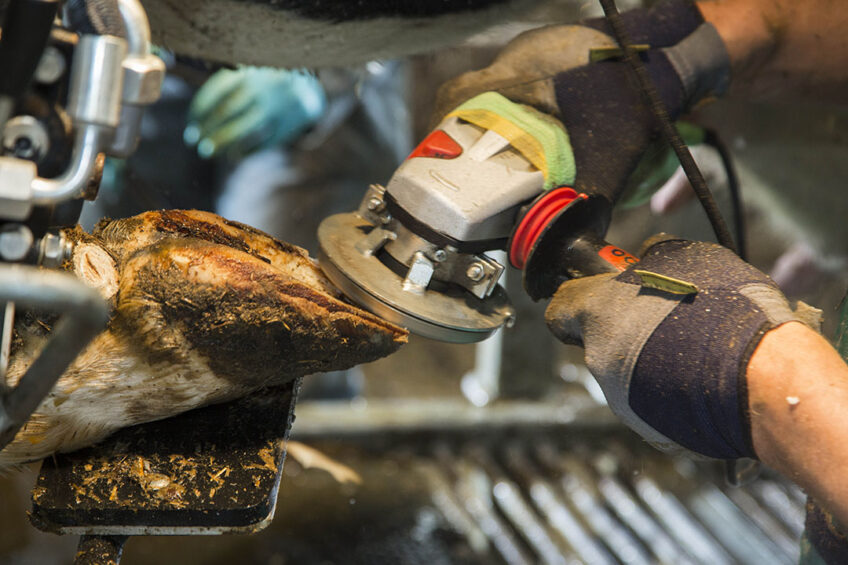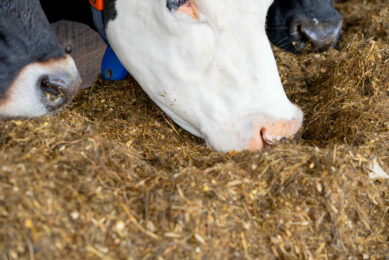Lameness: A look at fertility, milk production and control

Bovine lameness in cattle is one of the key endemic diseases causing health and welfare problems and production losses. Quantification of the impact of the disease is, therefore, vital to highlight its importance to industry and to determine the relative cost benefits of control intervention.
Approximately 85% of the cases of lameness are due to foot health problems such as sole ulcer, digital dermatitis, foot rot, deep infection, and laminitis, with only 15% due to lesions elsewhere on the limb. Most of these problems result, under certain environmental and management conditions, from the invasion of the foot area by bacterial species such as F. necrophorum, D. nodosus, B. melaninogenicus, S. aureus, and A. pyogenes.

Epidemiologic features
- Rainfall may predispose cows to certain foot lesions because of constant wetting. The wet conditions of winter and the dry conditions of summer appear to be associated, although the types of lesions differ.
- Most cases of lameness occur in mature cows from 6 to 8 years of age. Young cows do not appear to be as susceptible.
- In mature cows, lameness often occurs during the first 3 months of lactation, which has serious economic consequences.
- Lameness may be more common in certain heavy breeds such as Holstein Friesian than in lighter breeds such as Ayrshire, Guernsey, and Jersey. Some of these differences may be due to different growth and wear rates of hoof horn.
- Claw colour has also been implicated in lameness. Cattle with less pigmented feet are more prone to lameness.
- Lameness is often associated with sub-acute rumen acidosis due to imbalances in forage and concentrate intake. Although decisive evidence for a pathogenic role of endotoxins and carbohydrate overload in laminitis development is scarce, rumen function should be optimal to prevent lameness.
Milk production
Studies on UK farms have demonstrated that cases of clinical lameness were associated with a decreased milk yield from up to 4 months before diagnosis until 5 months after, resulting in a mean reduction of 357 kg per 305 days lactation. Sole ulcers and white line lesions were associated with a reduction in milk yield of 570 kg, and 330 kg respectively. A case of digital dermatitis was not associated with a decrease in milk yield. In either case, the loss of production associated with lameness is influenced by the severity of infection, the speed with which a lame cow is identified, and the treatment protocol employed.
Collaboration is key in tackling lameness
The key to improving hoof health is through engagement of all stakeholders from the cow up but also the processor down and ensuring that it is a collective effort.
Fertility
Lame cows often exhibit low fertility. Reasons for that include:
- Reduced feed intake, resulting in negative energy balance.
- It may be more difficult to identify the signs of oestrus in lame cows and these signs may be less obvious, or apparent for shorter periods.
- Stress can adversely affect ovarian function and follicular development, with a potential delay in cycling or the timing of ovulation.
- Inflammation can be associated with an increase in the service to conception interval. This may be caused by increased production of prostaglandin (PGF2a) – a chemical messenger that is important in the regulation of the cow’s oestrus cycle.
Economic losses
The magnitude of the financial loss resulting from lameness in dairy units is very similar in different countries, mostly varying between €40-50 per cow. This loss may be attributed to factors such as reduced milk receipts, early culling, reduced live weight, treatment cost, longer calving interval, and extra labour cost.
Control measures
The following guidelines are recommended:
Sanitation
Floor surfaces and alleyways must be cleaned as necessary to remove collections of urine, water, and manure, which contribute to constant wetting of the feet.
Control of house temperature
An east-west orientation will result in reducing solar exposure and hence alleviates many of these problems. Ventilation and cooling facilities should otherwise be provided during these periods.
Stocking density
Plenty of space should be provided so that the less dominant cows have an escape route and don’t get trapped, panic, and injure themselves in the process of fleeing.
Foot bathing
Foot baths containing formaldehyde or copper sulfate solution have often been advocated to control foot disease in cattle. For maximum effect, the feet of the animals should be cleaned with a pressurized spray of water before being walked through the footbath.
Dairy cow trim visit: How to get your money’s worth
Dairy farmers in Great Britain receive regular visits from the foot trimmer, as part of lameness management. But which factors can play a part in whether it’s money well spent?
Trimming
It is recommended to trim feet at least once or twice a year. The ideal times would be once at dry-off and again around 100 days in milk.
Nutrition
Dietary nutrients such as protein, fatty acids, minerals (Ca, Zn, Cu), and vitamins (A, D, Biotin) are essential for the control of lameness as they maintain hoof integrity and the waterproof barriers on the outside of the hoof.
Medication
With early diagnosis of the disease, animals may respond well to the topical administration of antibacterial agents. In advanced stages, however, systemic treatment will be necessary (Table 1).
Recent developments
There is yet a very limited understanding as to why the immune system is not capable of clearing the infection. However, studies are currently conducted in Britain to investigate genetic resistance to lameness by genetically profiling individual animals and performing advanced genomic and functional genomic analyses. Also, optimal breeding strategies are being developed to provide the means to breed genetically resistant to lameness cattle. Experts in the fields of animal science, veterinary medicine, genetics, biotechnology, bioinformatics, molecular pathology, immunology, microscopy, and epidemiology will be drawn upon to carry out this work. This exciting multidisciplinary collaboration will generate a comprehensive understanding of the molecular mechanisms controlling the foot health of dairy cattle.
Animals suffering from lameness will show signs of discomfort. Animals will spend more time lying on the floor and are therefore more likely to develop bedsores and disorders of the udder. Also, animals with sore feet will eat less and are hence more likely to develop a negative energy balance (NEB) state leading to more severe secondary disease. Lameness also raises an important issue in animal welfare. Since digital is supplied with a high number of sensory nerves, discomfort and pain will cause stress which will lead to the development of more severe disorders.
References are available from the author upon request
Join 13,000+ subscribers
Subscribe to our newsletter to stay updated about all the need-to-know content in the dairy sector, two times a week.










